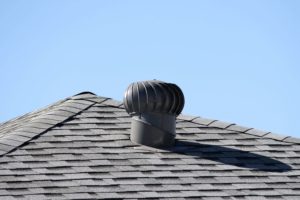
If you’re like most home owners, and love and cherish your home, you might like to read on. This article is about roof ventilation which many people tend to overlook. It seems that a lot of people are uneducated or are unaware about roof ventilation, not even realising such a thing exists.
Information in this article has been kindly provided by Roof Restoration Sutherland Shire.
Roof ventilation refers to the process of simply removing air (particularly hot air) from the roof cavity, i.e. the space between your roof surface and the ceiling. Normally this space is quite closed off and the roof surface itself acts as a heat conductor thus heating the air in the cavity.
As mentioned, many people are unaware that such a thing as roof ventilation even exists. However you might be impressed to learn that it is a relatively easy and affordable way to cut down on your energy costs. In addition to cutting down on energy costs, roof ventilation can actually add life to your roof prolonging any need for expensive roof restorations or roof replacements.
For those in the Sutherland Shire, a roof restoration company such as Roof Restoration Sutherland Shire can be of great assistance in assessing your ventilation needs and providing a solution for you which both meets the requirements of the building and your budget. If you are looking at purchasing a new home, restoring or replacing your roof, or building a brand new home, professional advise can be very valuable.
Commonly in Australia, there are two types of roof ventilation that work in conjunction with each other. The first method refers to extraction and this can be achieved either mechanically or naturally by installing ridge cap vents. The mechanical method involves the very well known Aussie “whirlybird” which is installed on the roof and is wind driven to extract the hot air from the air roof cavity. This is also known as an exhaust method.
To replace the hot air which has been exhausted, cool or outside air must be allowed into the cavity. This is achieved by placing air vents around the eaves to allow cool air in to replace the hot air which has been exhausted.
So in summary, extraction units known as whirlybirds or ridgecap ventilators will allow hot air to escape and vents placed around the eaves will allow the hot air to be replaced with the cooler air from outside. Please note that this doesn’t mean anything is being cooled – it’s just that the hot air temperature is being brought down closer to the ambient temperature of the outside air.
A well ventilated roof can save you money in the long term from helping to reduce energy costs when trying to cool down your home. As you have learnt, it is a relatively simple installation process to fit out your roof with an efficient ventilation system.